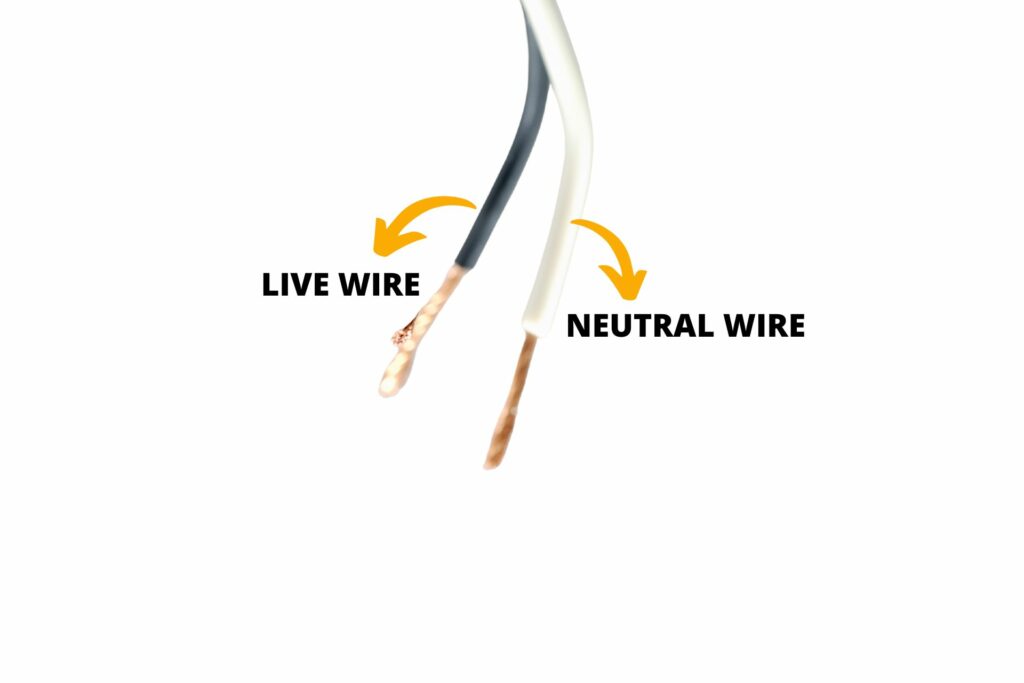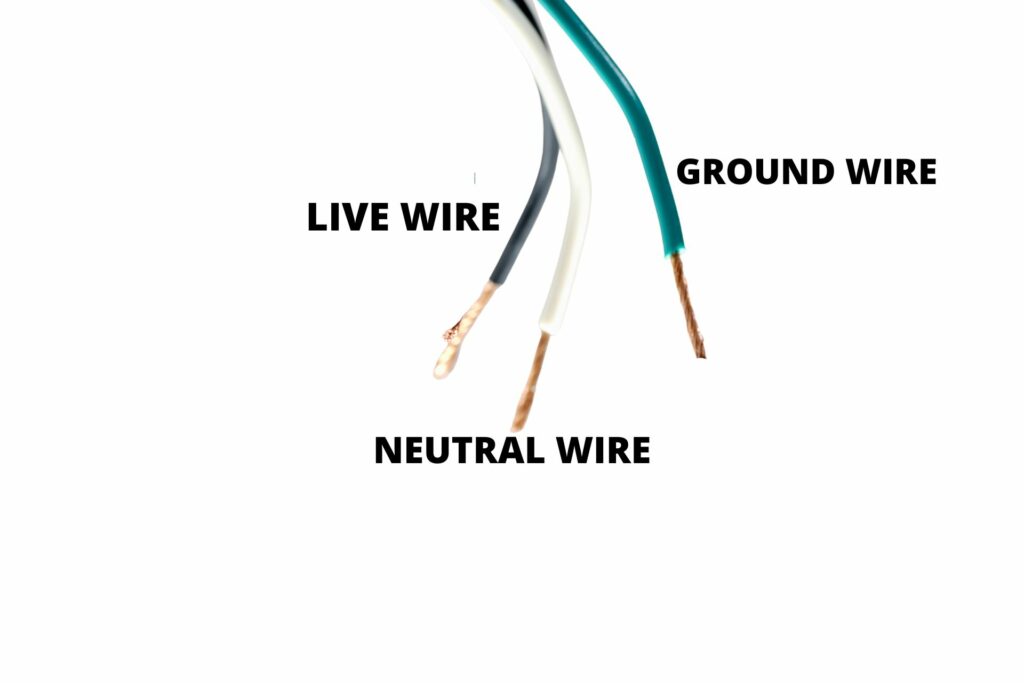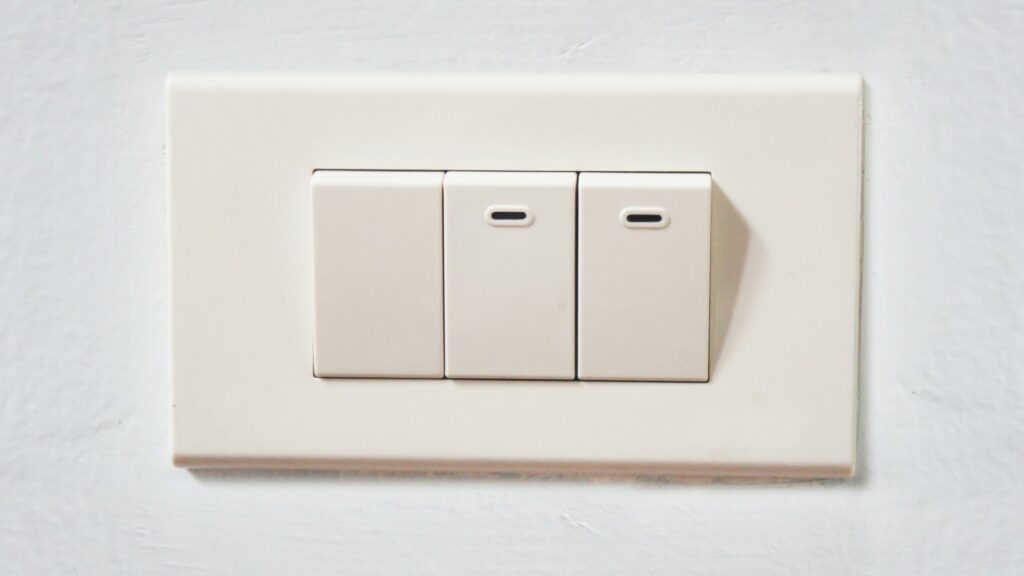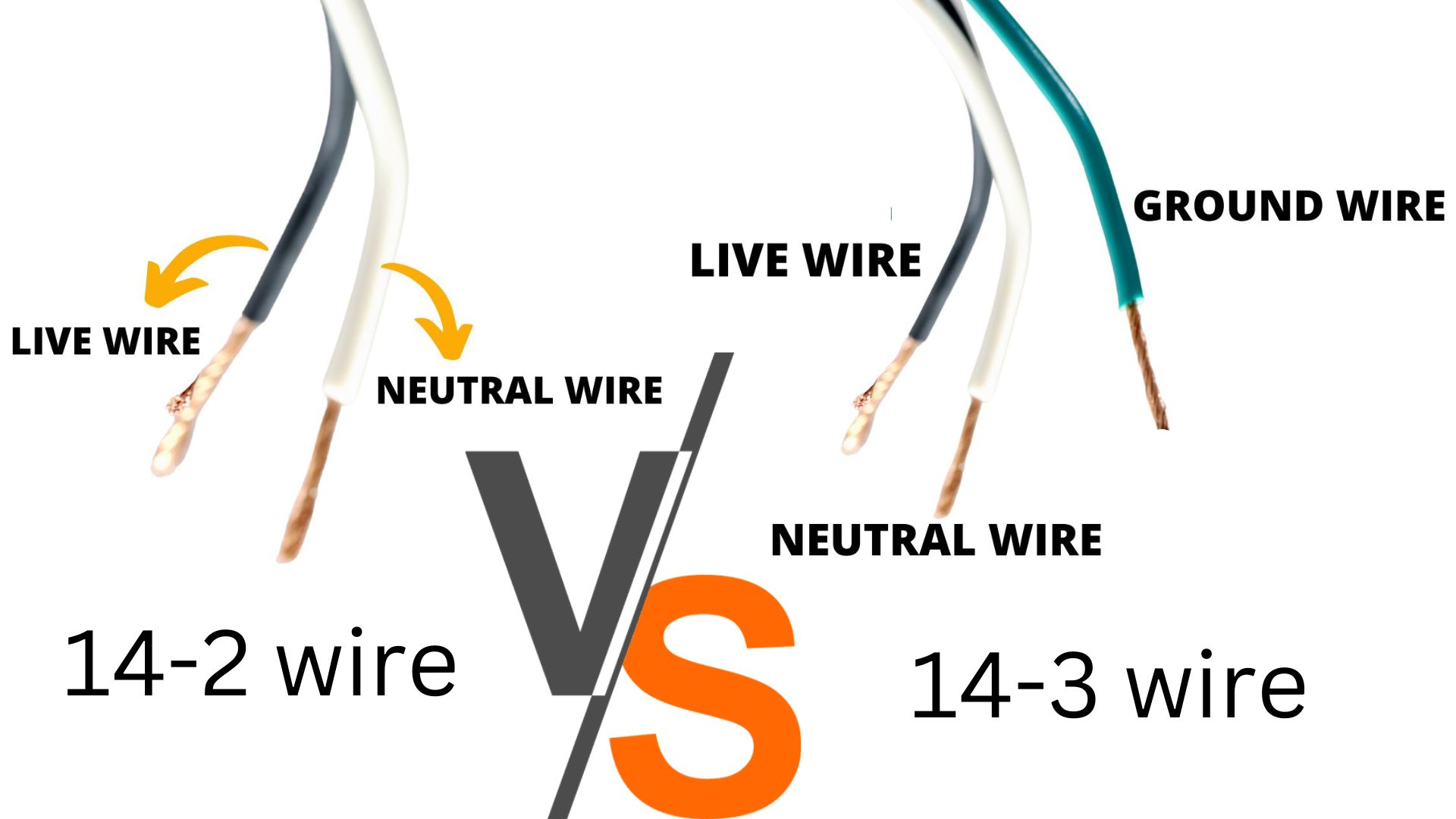Why would anyone compare 14-2 to 14-3? Are they not the same wire? No, they are not. Although, it is not difficult to understand why a layperson would reach that conclusion. Both options are 14AWG, and a 14-gauge cable can accommodate 15 amps.
14-2 VS 14-3 Wire
1). 14-2 Has 2 Conductors While 14-3 Has 3 Conductors
This is the most important consideration. 14-2 and 14-3 wires are both 14 gauge. They can both transmit 15 amps without overheating. But the number of conductors they offer varies. 14-2 has two conductors:

- The black wire, which is the hot wire. The black wire is live. It carries electricity from the power source to the load. The black wire is dangerous
- The white wire, which is neutral. It completes the circuit by taking the current back to the panel.
14-2 wires have a green or bare ground conductor. However, you don’t count it. Even though you can see it when you open the sheath, as far as the average professional is concerned, 14-2 cables have two conductors. The bare cable plays the same role as every other ground. It takes the excess current to the earth.
14-3 stands out because it has three conductors, namely:

- The black wire, also the hot wire. It brings electricity from the power source.
- The red wire, another hot wire. It performs the same function as the back wire. However, you don’t have to use it if it doesn’t serve a purpose in your application.
- The white neutral wire takes the current back to the source.
- The ground wire takes the excess current to the earth during a malfunction. For instance, a loose connection can energize an appliance’s metal casing. The ground will protect you from electrocution.
Once again, you don’t count the ground in this configuration. 14-3 has two black conductors as well as a white wire.
2). 14-2 And 14-3 Carry The Same Amps
You find 14-2 and 14-3 in 15A circuits. This is evident from the NEC’s tables. You can determine the ampacity of a wire size by looking at the NEC’s tables.
The NEC’s tables associate 14AWG with 15 amps. The number of conductors won’t change the amp rating of the wire size. The NEC has limited 14AWG lines to 20 amps, which sounds like a lot.
You expect 20 amps to cause overheating. But 14AWG can safely transmit 20 amps at 75 degrees C. The number of conductors is still irrelevant. 14AWG will transmit 20 amps at 75 degrees C regardless of whether it has two or three conductors. That being said, 14-3 handles heavier loads.
3). 14-2 Is Used In Household Devices While 14-3 Appears in Multibranch Circuit
You will probably deploy these wires depending on the number of conductors you require. For instance, a project that uses three wires will fit 14-3 cables. On the other hand, most household devices and tasks can made do with 14-2.
14-3 appears in multibranch circuits. They require a black wire on each phase (A and B). You are free to share the neutral conductor. The red wire will perform different objectives. For instance, it acts as the communication line in interconnecting smoke detector systems.
Therefore, 14-3 appears in multi-wire circuits and devices such as fans with separate switches.
4). 14-2 Is Associated With Lighter Loads While 14-3 Is With Heavy Loads
Between the two, contractors associate 14-2 with lighter loads. You find the wire size in and around light fixtures and outlets. The exact number of lights on a circuit with 14-2 will vary depending on the appliances you want to run.
It wouldn’t be an exaggeration to call 14-2 a low-wattage wire size. You should upgrade to 12 or even 10AWG for high-wattage appliances. But 14-3 may sustain you for a little while. The wire size will run your lighting circuits.
However, it can withstand the electrical demands of heavier appliances such as refrigerators and dryers. 14-2 cables are the same. They will accommodate everything from fridges to dishwashers. But 14-3 gives you more wiring options. 14-3 can support heavier loads because it has three wires instead of two.
14-2-2 is a suitable alternative to 14-3.
5). 14-2 Works With 120V While 14-3 Works With 240V
This is another significant difference. 14-2 works with 120V circuits. This makes sense because contractors use 14-2 to configure simple lighting circuits. On the other hand, 14-3 can work with 240V circuits. Using a neutral at 120 volts makes 14-3 the perfect fit for three-way switches.
It is worth noting that home guide info has identified 14-2 and 14-3 are suitable wiring sizes for 15 – 20A 120V circuits.
6). 14-3 Is Expensive Than 14-2
The gauge affects the pricing. Conductors with a higher gauge are typically more expensive than lines with a lower gauge. However, 14-3 and 14-2 are the same gauges, which raises a question. Are they the same price?
No, they are not. 14-3 has more wires, which amounts to more copper or aluminum (depending on the material). Therefore, you cannot buy it at the same price as 14-2. If your retailer charges $0.52 for each foot of a 14-2 line, that figure will jump to $1.57 per foot for 14-3.
The exact pricing may vary depending on where you live. But 14-3 will cost you more than 14-2.
7). 14-3 Is Applicable To 3 Way Switches

Three-way switches are popular because you can turn the lights on and off from multiple locations. If you want to wire a 3-way switch, experts expect laypeople to use 14-3. 14-3 cables have an extra wire that is vital to the 3-way switch configuration.
You can experiment with 14-2, but this practice is dangerous, even though it can work.
Which Gauge Wire (14-2 or 14-3) Is Best To Use?
Neither option is superior to the other. Admittedly, 14-3 can accommodate multibranch circuits. People use it to wire 3-way switches, which you can’t do with 14-2. But that doesn’t make 14-3 better.
After all, if you don’t have multi-branch circuits, 14-2 will satisfy your needs. You don’t always require that additional wire. In fact, 14-2 and 14-3 lines work hand in hand to operate a 3-way switch. 14-2 will run to the first switch, while 14-3 stands in the gap between the two switches on the circuit.
Each option serves a purpose. 14-2 is an adequate solution for conventional lights and outlets on a 15A circuit. Don’t waste money on a 14-3 cable when you don’t need the extra wire. Don’t forget that 14-3 is more expensive than 14-2.
Some people use 14-3 just in case the need for an additional conductor arises, which makes sense if you have the money.
As far as the wire size is concerned, 14-2 and 14-3 have the same gauge. They can both transmit 15 amps of current. The additional conductor in a 14-3 cable does not impact its current carrying capacity. Some people flock to 14-3 because they think it is the safer option.
But a cable’s current carrying capacity is shaped by the material, length, and temperature rating. The environment will also play a role. Lines in settings with a high ambient temperature must carry fewer amps because they are more likely to overheat. The second live conductor in 14-3 is irrelevant to this discussion.
Can You Connect 14/2 and 14/3 Wire?
Yes, you can connect 14/2 and 14/3 wires. People associate these connections with 3-way switches, but they are wrong. Contractors use both 14/2 and 14/3 in 3-way switches but don’t connect the cables.
A 3-way switch has provisions for the three wires you find in a 14-3 cable, including two screws on either side that secure the red and black wires. But before deploying the 14-3 cable, you must run 14-2 wires from the electrical panel to the switch box.
14-3 comes into play when you want to connect two switch boxes. The 14-3 and 14-2 cables don’t have to meet for the 3-way switch to work. People join these lines when they want to extend the reach of an existing wire.
For instance, if 14-2 is already connected to the power supply and you want to configure a new load using 14-3, you can connect 14-3 to 14-2 to bring power to the new load. The process is as straightforward as it sounds.
Connect the black, neutral, and ground conductors from the 14-2 cable to the black, neutral, and ground conductors of 14-3. Ignore the red wire. It doesn’t serve a purpose in this instance. Apply a cap to make it safer. You can connect two wires of the same gauge without causing unnecessary harm.
Related Post:

